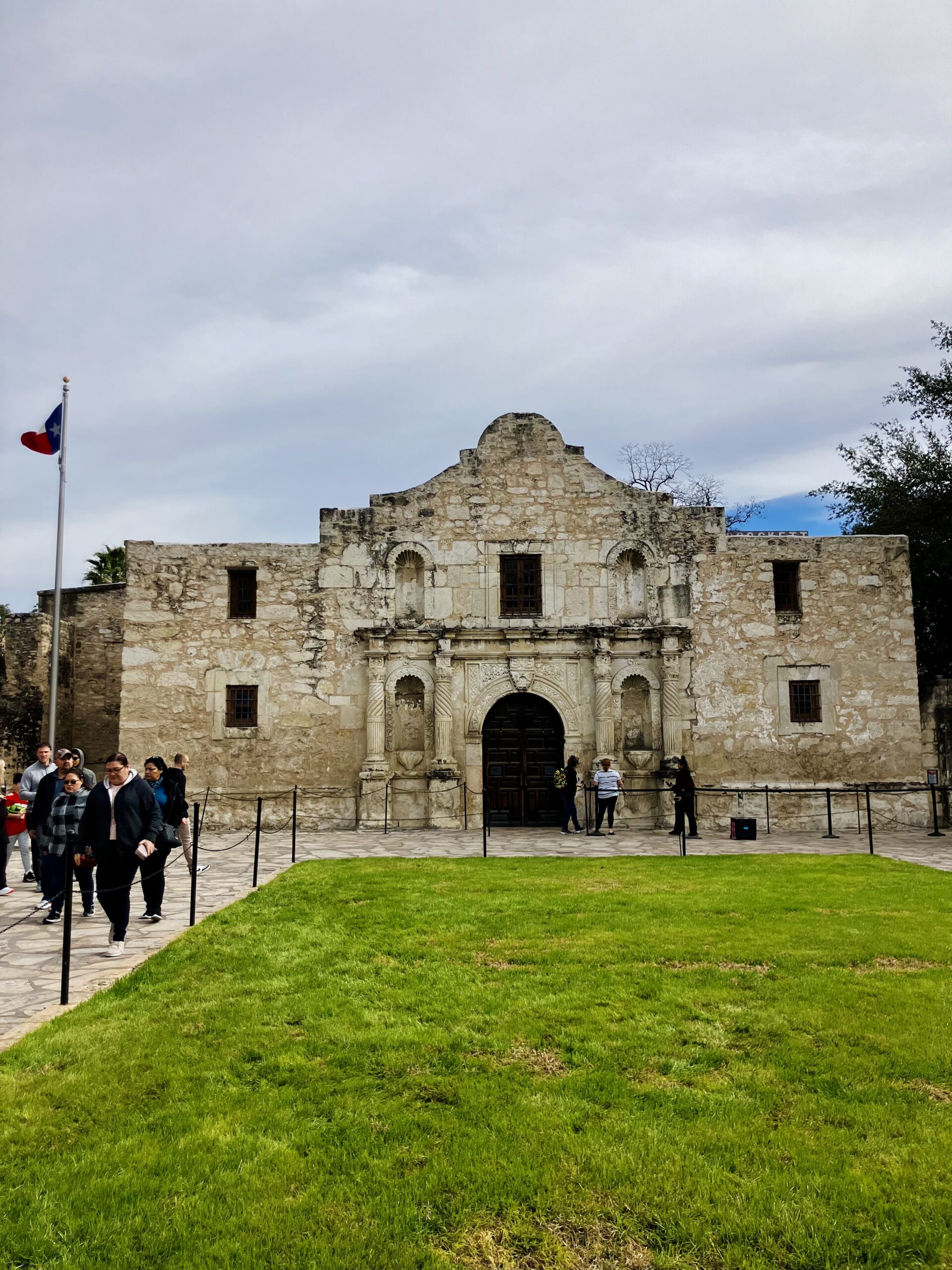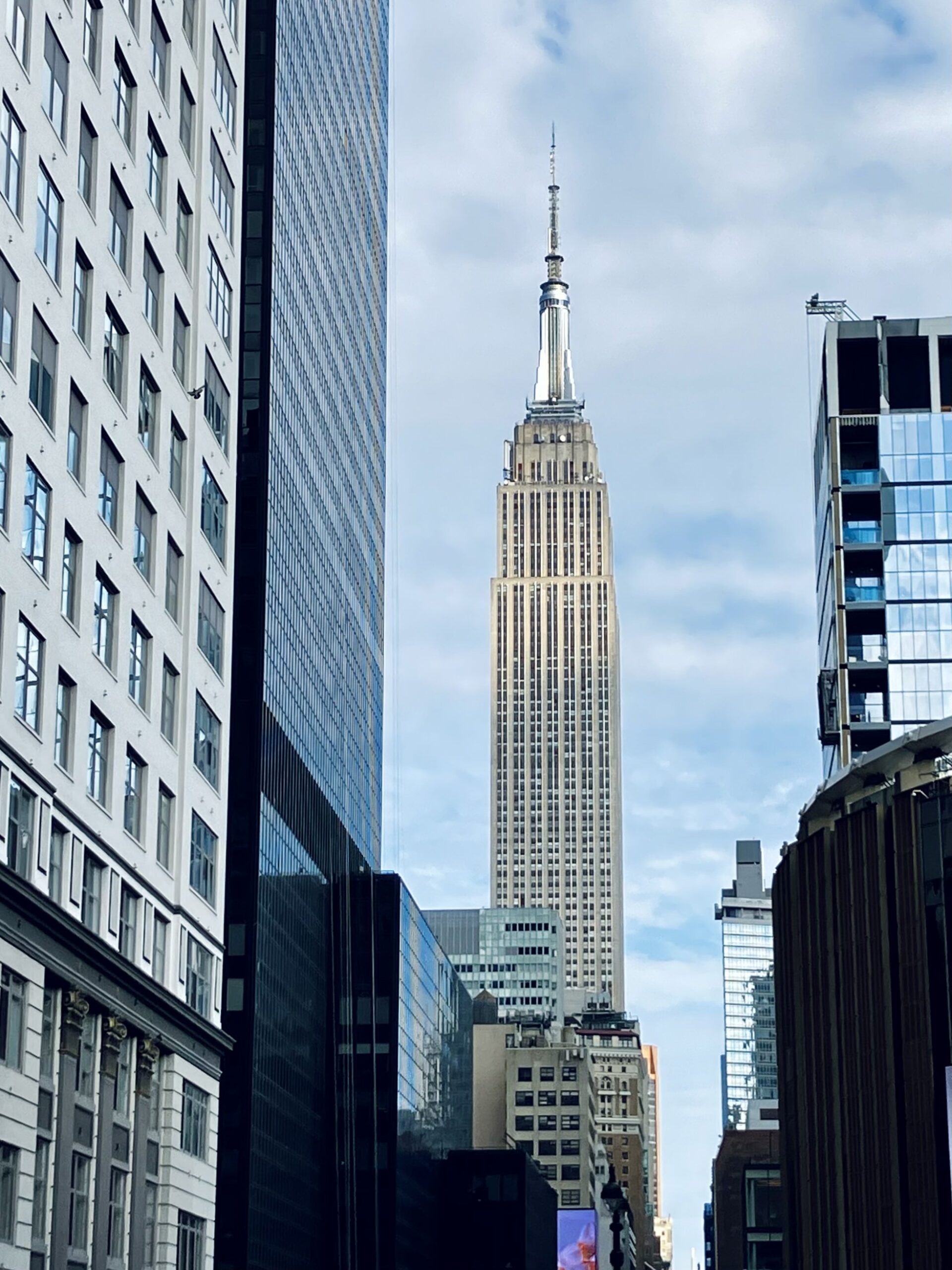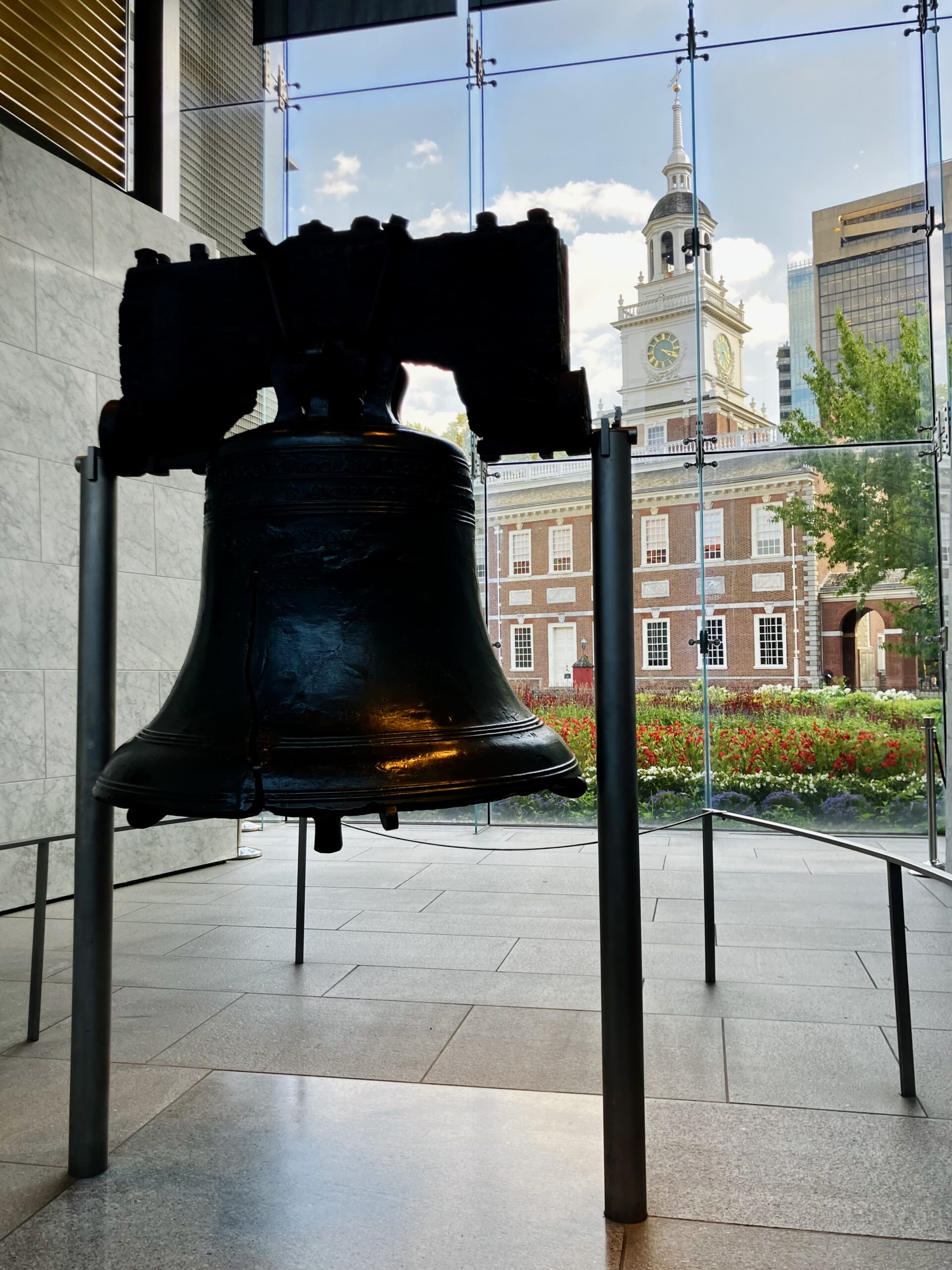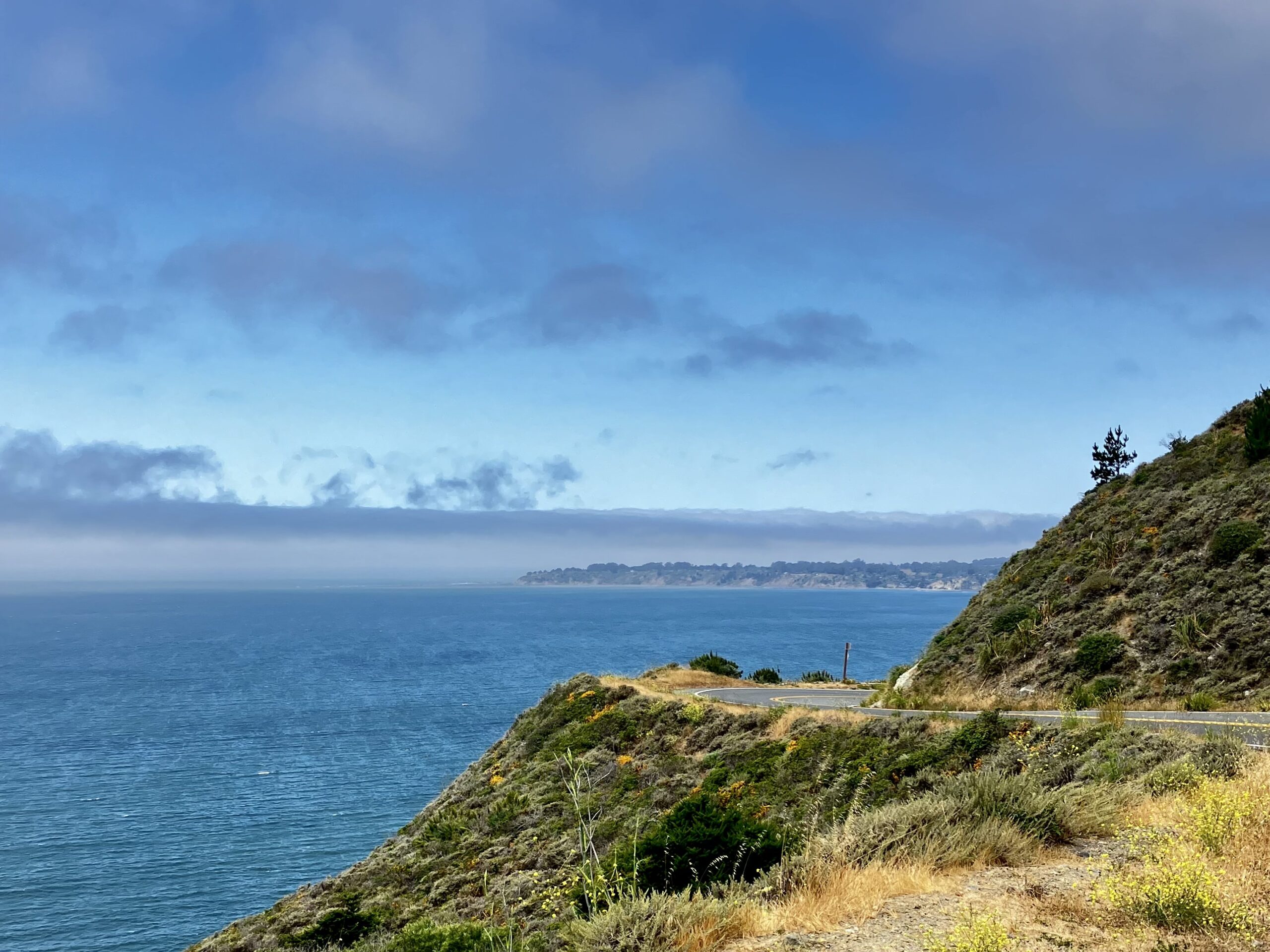Last July, Frank, my parents, and I visited the Henry Ford Museum of American Innovation in Dearborn, MI. They gifted us a membership in the process, and this week, Frank, Victoria, and I finally went back! During our first visit, Covid was still in full swing, so we wore masks the whole time, and many (typically interactive) exhibits were closed off. Also, it was a “Members Only” weekend, so the museum was not very crowded at all. This time around, essentially the opposite for all of that was true. Only unvaccinated people wore masks, we climbed on things and went into others, and there were so. many. people. Not in a bad way, though! The crowds felt very normal and expected.

I just want to reiterate again, the sheer size of this museum truly boggles the mind. In a typical art museum, each piece tends to be relatively small and takes up only a little space. In the Henry Ford Museum, the “pieces” include steam engines, planes, combines, old agricultural equipment, so many cars, and many other larger antiquities. Furthermore, the property includes a whole village, transported out of a different era, as well as the laboratory where Edison and his team invented the lightbulb! (Well, Tesla did it first, but that’s neither here nor there.) Last visit, the village was closed, and this time, inclement weather kept us inside. Still, we heartily recommend you come visit and go exploring for yourself!
“With Liberty and Justice for All”

Our first stop inside: the “With Liberty and Justice for All” exhibit. It was a truly powerful testament to the many and varied fights for freedom and equality in this country. Near the front, a copy of the Declaration of Independence and pictures and blurbs about the founding fathers greeted us. A little further, and we saw an area dedicated to the women’s suffrage movement, with quotes by Susan B. Anthony and others seeking the rights to vote and hold public office. After rounding a corner, the ode to the Civil Rights Movement truly moved us. We went into the bus where Rosa Parks inspired a multitude of African Americans to engage in civil disobedience. A clip of Martin Luther King Jr.’s “I Have a Dream” played on a loop. I loved the fascination on Victoria’s face as she watched his passion, courage, and conviction. This country still has a long way to go, but seeing the bravery of those before us left us feeling uplifted and inspired.


Ode to the Railroads
Following the “Liberty and Justice” exhibit, we strolled past the row of Presidential cars, musing on the evolution of the vehicles over the years. Frank felt particularly excited to see the section on trains (Frank loooooves trains), so we made a beeline for the far side of the museum. A real 1941 Allegheny Steam Locomotive, 125 feet long, 771,000 pounds, steals the show in this section. Victoria seemed to really love touching it and lit up when we got up close and personal. On the other side of the Allegheny, Victoria shared a sweet moment with the operator in the Model Train Layout, laughing and waving at him as he made the tiny trains whistle!


Another highlight on this side included a massive Canadian Pacific Snowplow from 1923. The plow itself weighs 20 tons and was one of 36 made between 1920 and 1929 in Montreal. These plows prevented train derailments during the winter, and once again, the magnitude and height of this thing blew our minds! This section also included replicas of old railcars, an 1831 steam locomotive, and a Detroit, Toledo, and Ironton Caboose. We lingered here for a while, indulging Frank’s fondness for all things trains.


Driven to Win: Racing in America
A newer exhibit, not yet available last time we visited, detailed the history of racing in America. This area showcased the earliest vehicles used for racing, up through modern racing vehicles. Indy Car, Stock Cars, Land Speed Racing, Sports Car Racing, and more, tons of examples of these vehicles filled this section. The two that stood out to us the most included the Ford GT, both a real metal one and a clay model, and the Goldenrod, a land speed racer. In 1965, at the Bonneville Salt Flats in Utah, the Goldenrod set and held the land speed record for 25 years, reaching a maximum speed of 409.777 mph…without jet fuel. Absolute insanity.



This part also contained several interactive portions to the exhibit, involving pit crews, soap box derbies, and a video presentation. We passed on many of those things because Victoria had become antsy, but they looked really fun!
Driving America
We kept with the theme of cars and moved along into the “Driving America” exhibit. A mind-blowingly huge collection of historically significant vehicles, we saw the evolution of cars from the Model-T through a 2002 Prius hybrid, and so many in between.

At the front of the exhibit lies a deconstructed Model-T, with all of the components strung up in a fascinating vertical column. We also stumbled upon a 2016 GM first generation self-driving test vehicle (so interesting and weird!). Seeing the models change throughout the years, as safety standards and the styles of the times evolved, proved particularly intriguing. Vehicles of all kinds have changed so much and seeing them all together in one place shows that very vividly.


Heroes of the Sky
We spent some extended time in the section devoted to the history of flight. The Henry Ford Museum possesses many replicas and actual historical planes from some of the most noteworthy moments in aviation history. We saw a replica of the 1903 Wright Flyer, the plane created by the Wright Brothers that achieved the first flight. In addition, we learned about the famed explorer Richard E. Byrd, and we saw his two planes that he flew to the North and South Poles! Apparently, the Byrd got his plane to the highest settlement in Norway but no one was there, so he personally constructed a raft and propelled his plane through the ice floes! The exhibit also included stunt planes with a model “wing-walker.” Given that my mother earned her pilot’s license back in the day, I was raised with a deep appreciation of biplanes and the general history of flight. Frank’s section was the trains; mine was the planes!



Made in America: Power
After the planes and learning about the Heroes of the Sky, we made our way over to the section dedicated to the earliest days of the Industrial Revolution. Frank and I could not help but gape in amazement at the colossal steam and electric engines utilized to further industry and bring electricity to the common man. Also, I marveled at the foresight of the Ford family, taking the time to preserve and save those factory components. Imagine knowing that future generations would appreciate examining the technology of generations past, and having the means to provide a space to save said tech. Standing next to the 1788 Rotative Steam Engine in particular made me feel so very small, and so very thankful for the modern comforts we enjoy because of how that evolved. I simultaneously mourn the environmental impact of that industrial progress…it’s bittersweet, at the very least.


Agriculture
For a little bit of context, I grew up in Cocoa Beach, FL, a beach town tourist trap. Frank grew up in Toledo/Pioneer, OH, i.e. farm country. The more modern agricultural equipment in the Agriculture region of the museum practically bored Frank, whereas I couldn’t make heads or tails of what I was looking at. Regardless, I found the combines, tractors, plows, and other equipment that have made farming more efficient, absolutely riveting. I know I sound like a broken record by now, but once again, seeing how agricultural technology has changed over the years was just so cool! Given my lack of knowledge, I did not spend very much time in here, especially because I was eager to revisit the next section.


Your Place in Time: 20th Century America
I love time capsules. Seeing a perfectly preserved snapshot of an era brings me joy. Therefore, this portion of the museum always enthralls me. Broken up into roughly ten rooms, this exhibit possesses memorabilia from each decade within the 20th century. We saw the explosion of television and MTV in the 80s (and a typical teenager’s room), and a tribute to the silver screen giants and The War in the 40s. It broke down the various generations, delineating the boundaries through the Baby Boomers, Generation X, The Greatest Generation, Millennials, and the like. This spot even took a stab at “The Future,” making predictions of what the 21st century might be like. All together, this portion of the Henry Ford remains highly interesting to me and never gets old!


Mathematica
Our last stop before we headed out: the magnificent tribute to Math. Frank loves math almost as much as trains, so we lingered here for a while as well. With noteworthy quotes by mathematicians and philosophers alike around the ceiling, a wide variety of interactive activities filled the room. My personal favorite involved watching an “arrow-train” of sorts follow a track on a Moebius strip. Another was the “Probability Board,” where hundreds of balls drop from the top center of the board and bounce on pegs to form a bell curve. When the curve is full, a bell rings and all of them drop, which is sooo satisfying to watch! On the other side of the room, metal geometric shapes are repeatedly dipped in soap to form the coolest bubbles. Even those who feel they dislike math would surely find something to entertain themselves, and you’ll surely learn something too!


Wrapping Up
We had a marvelous time at The Henry Ford Museum! It is so cool seeing so much technology and industry from so many eras all in one place. We fervently insist that any visit to the Detroit, Michigan area MUST include a stop here. For more information about tickets and memberships, check out their website here. Hopefully in the not too distant future, we will be able to go back. We still need to see Greenfield Village and Edison’s lab!










